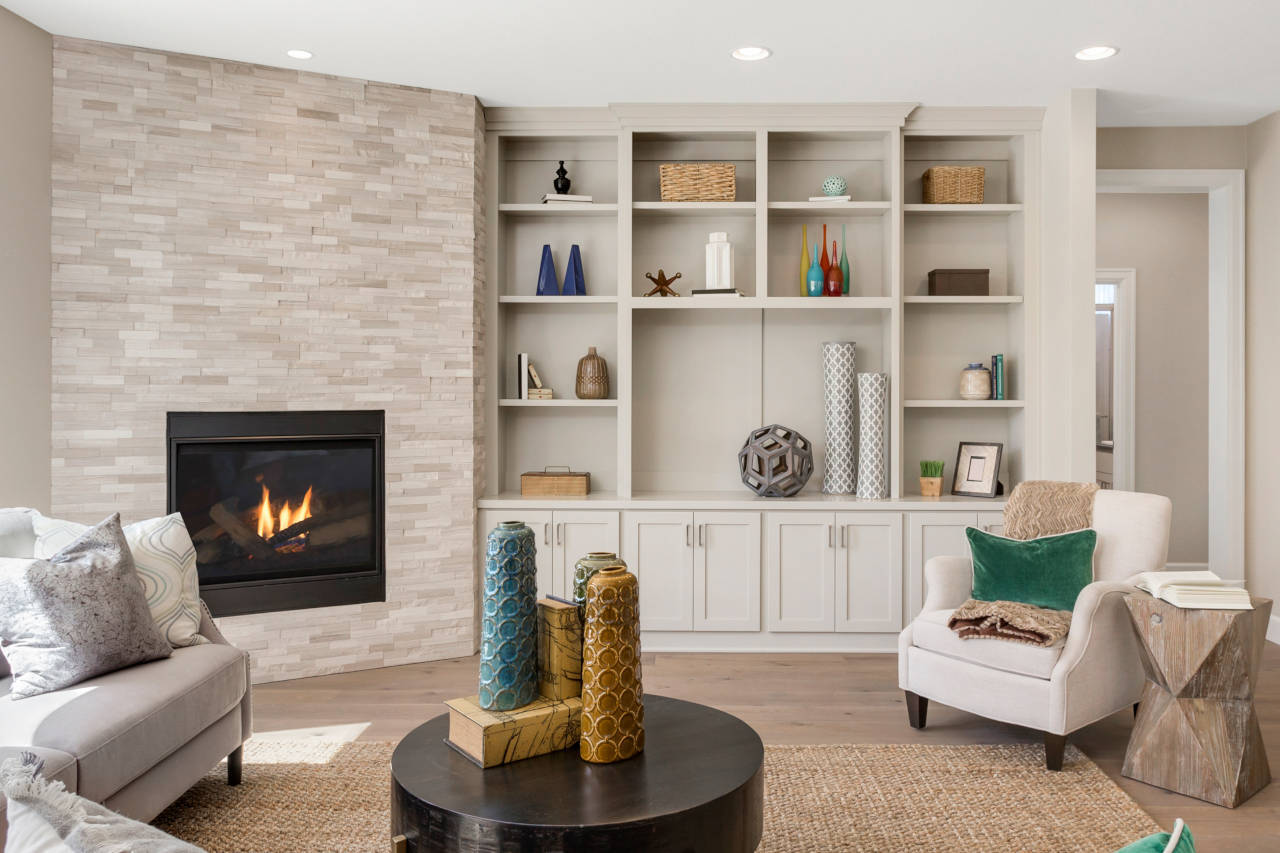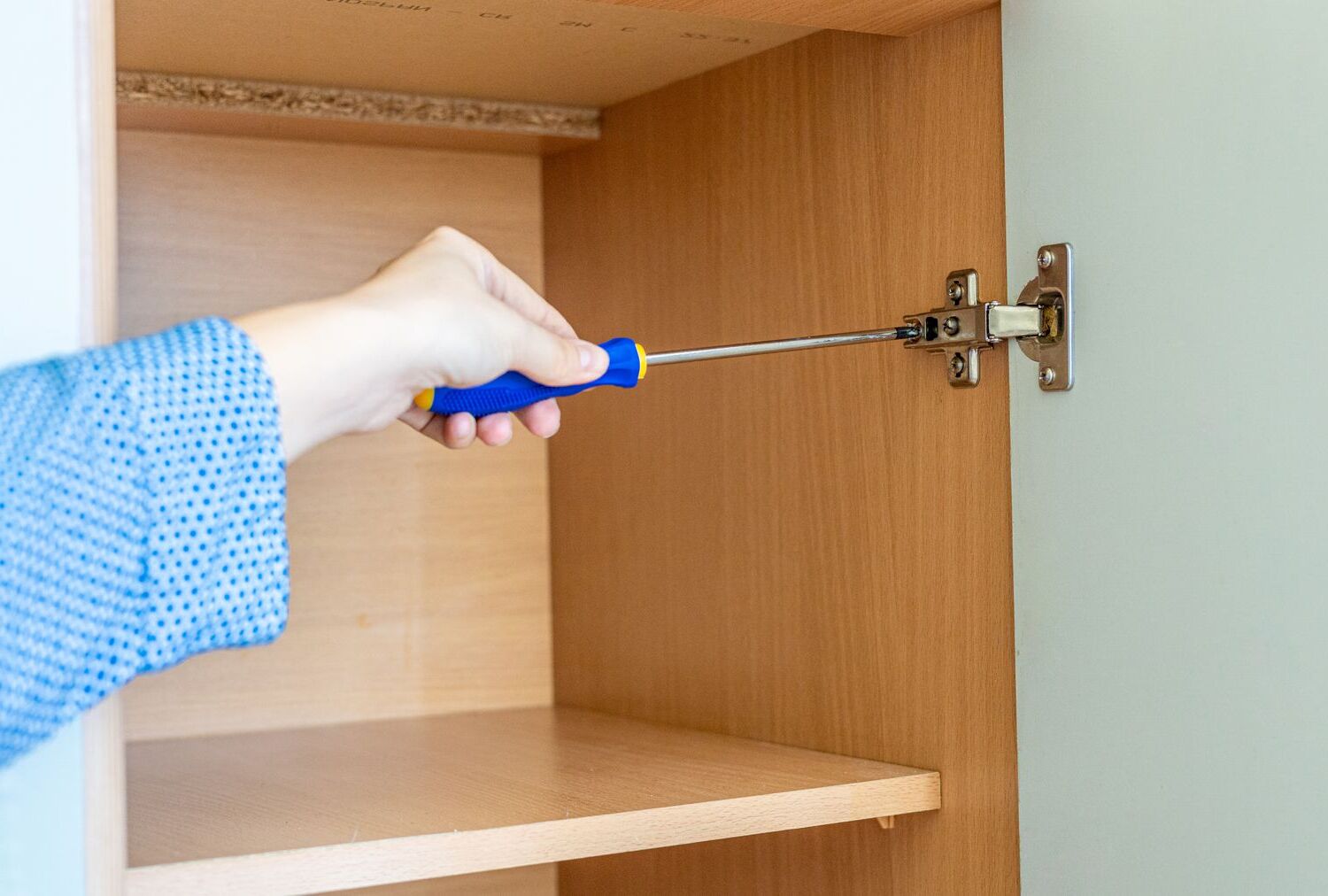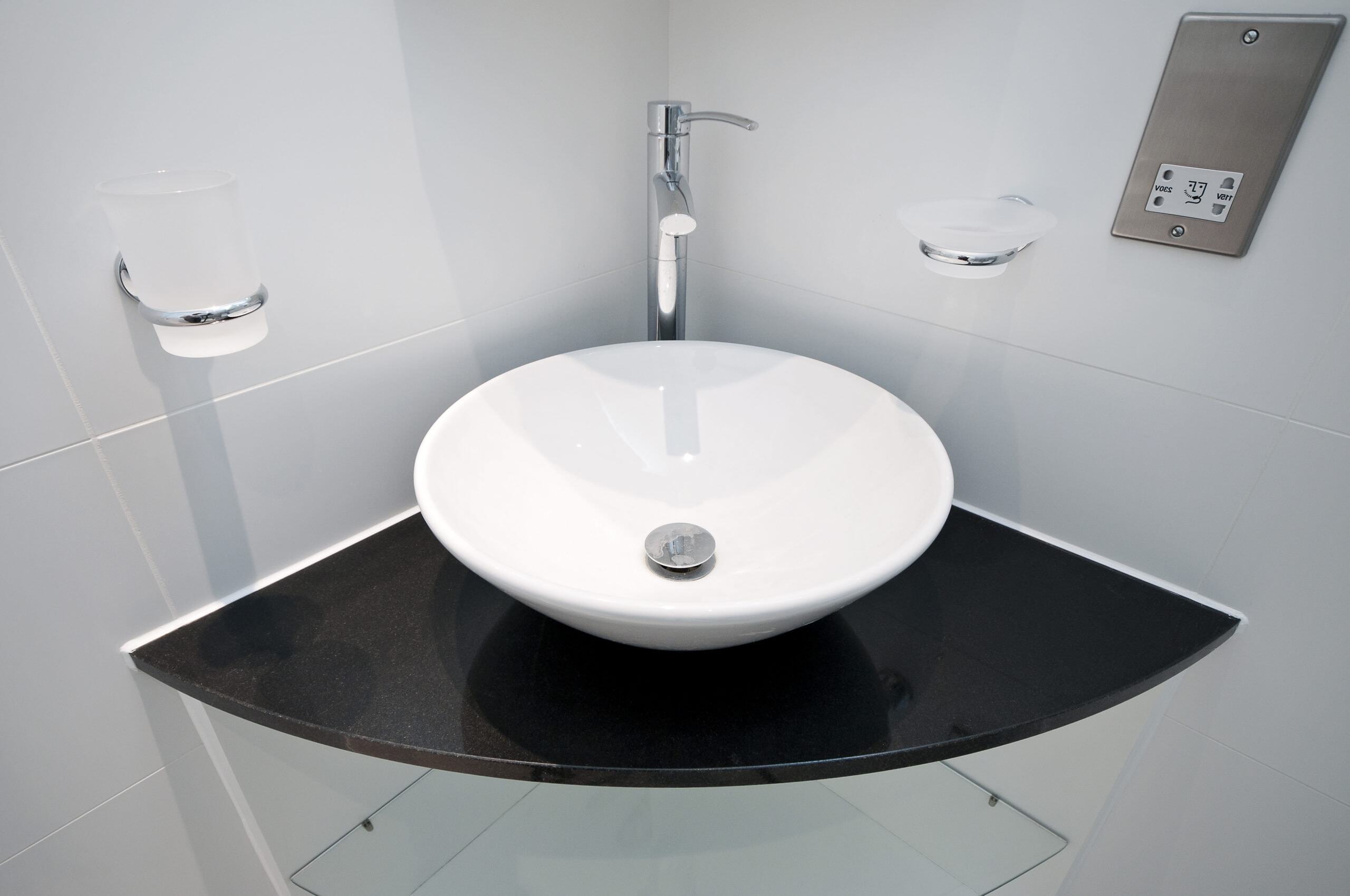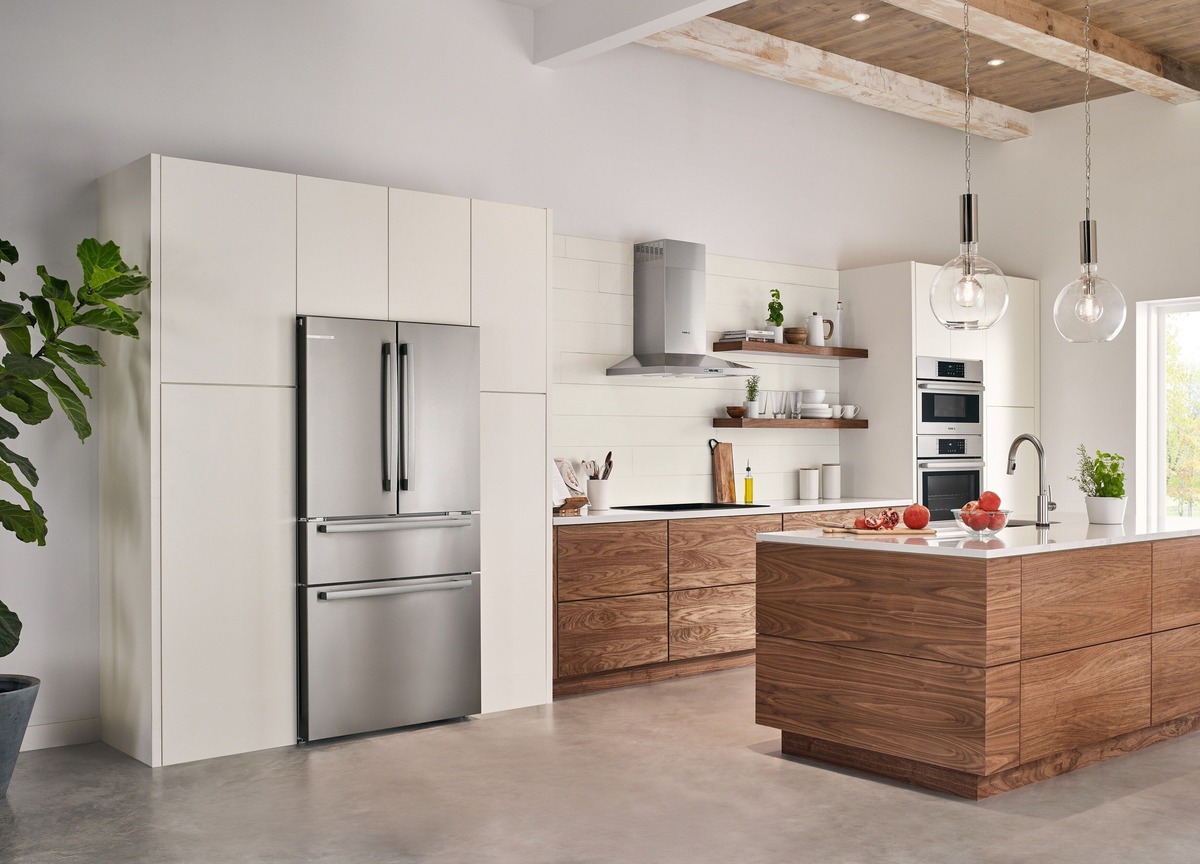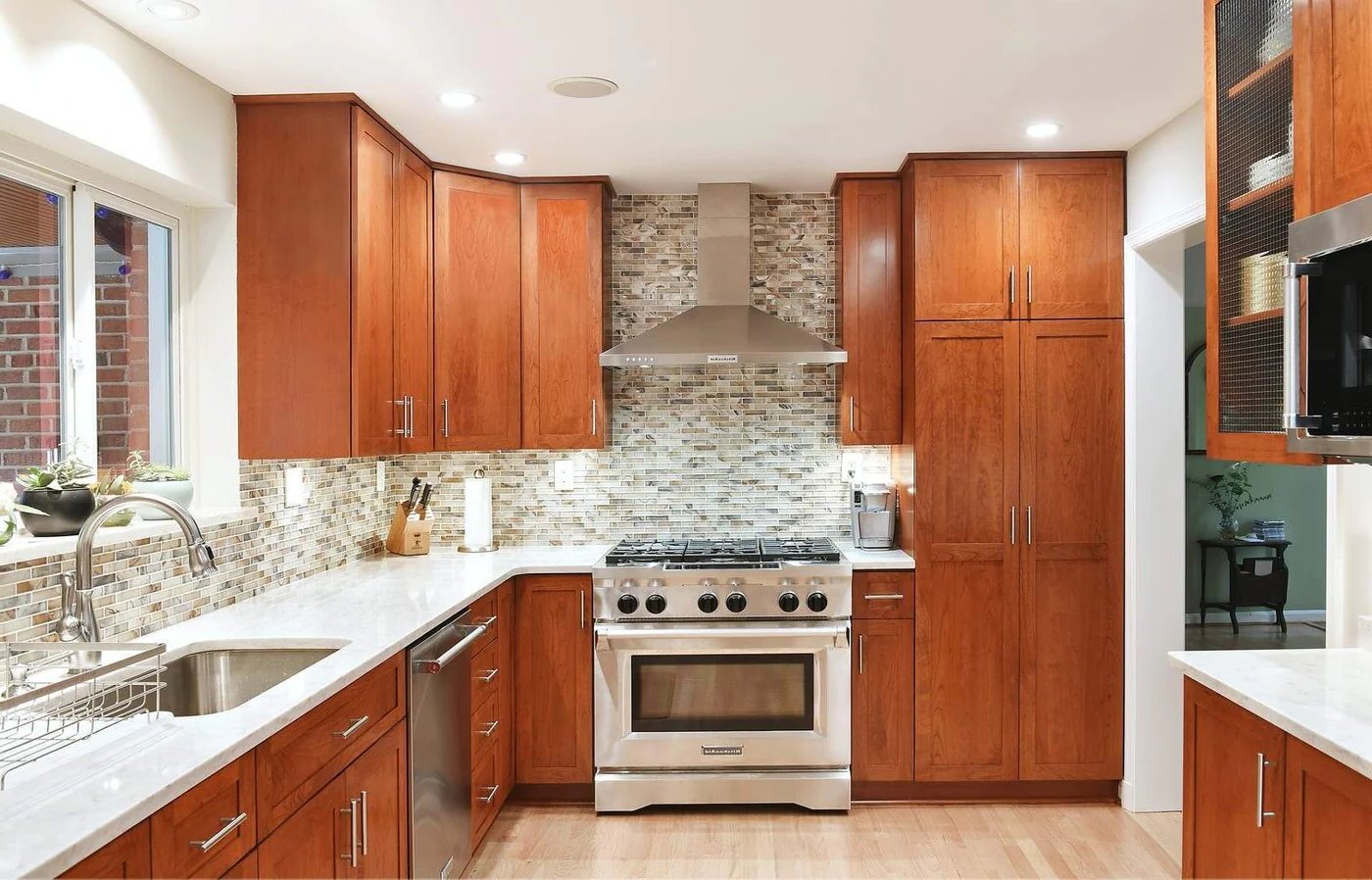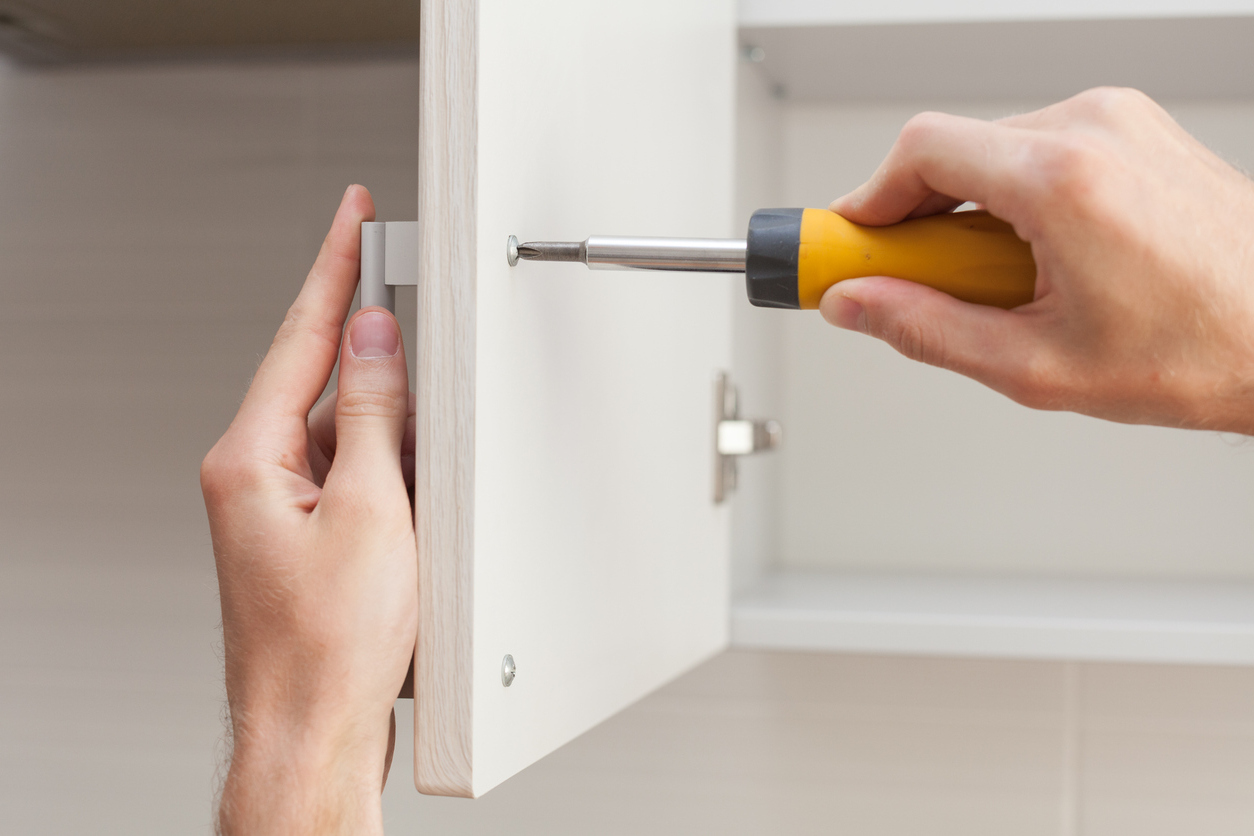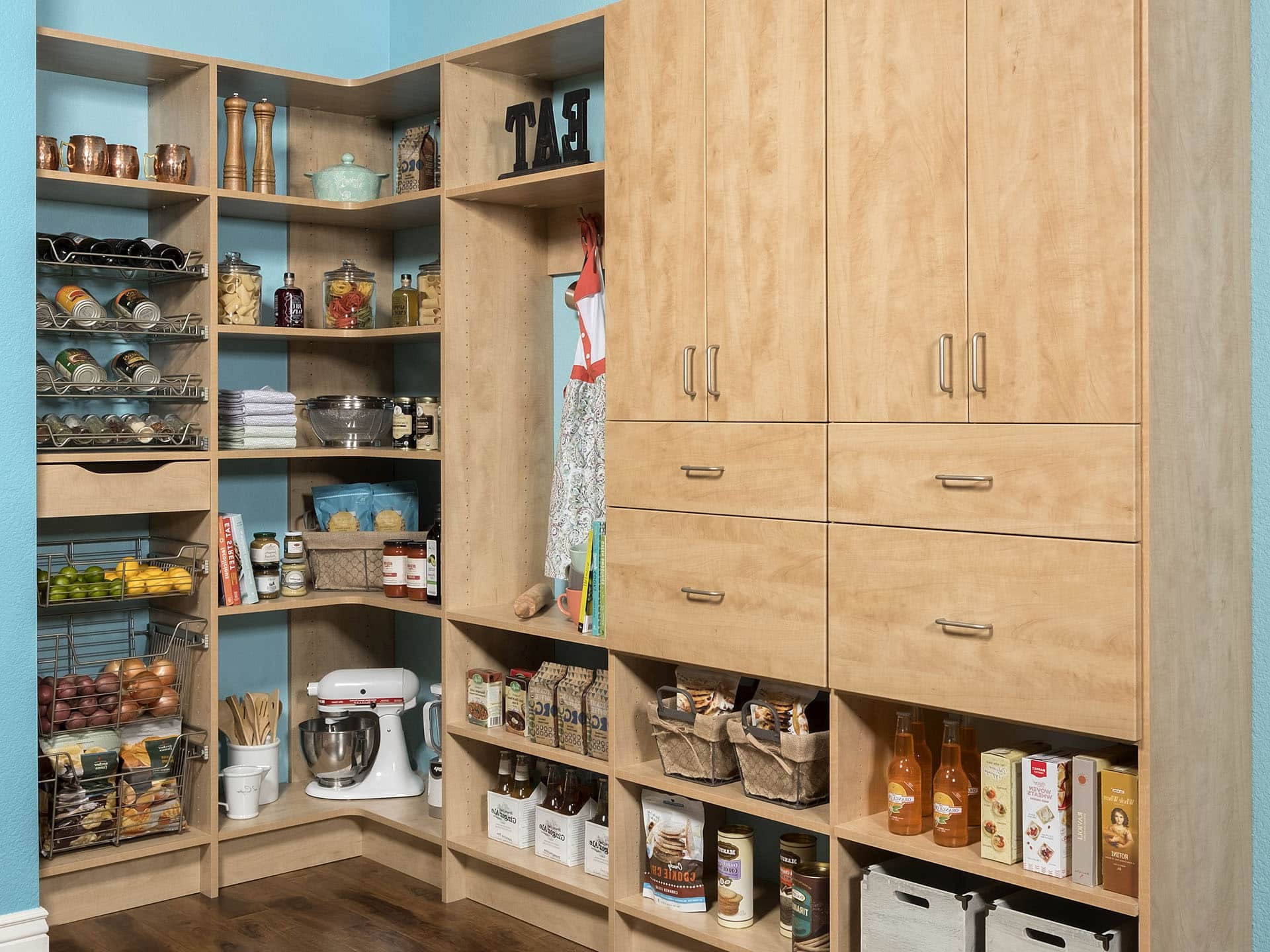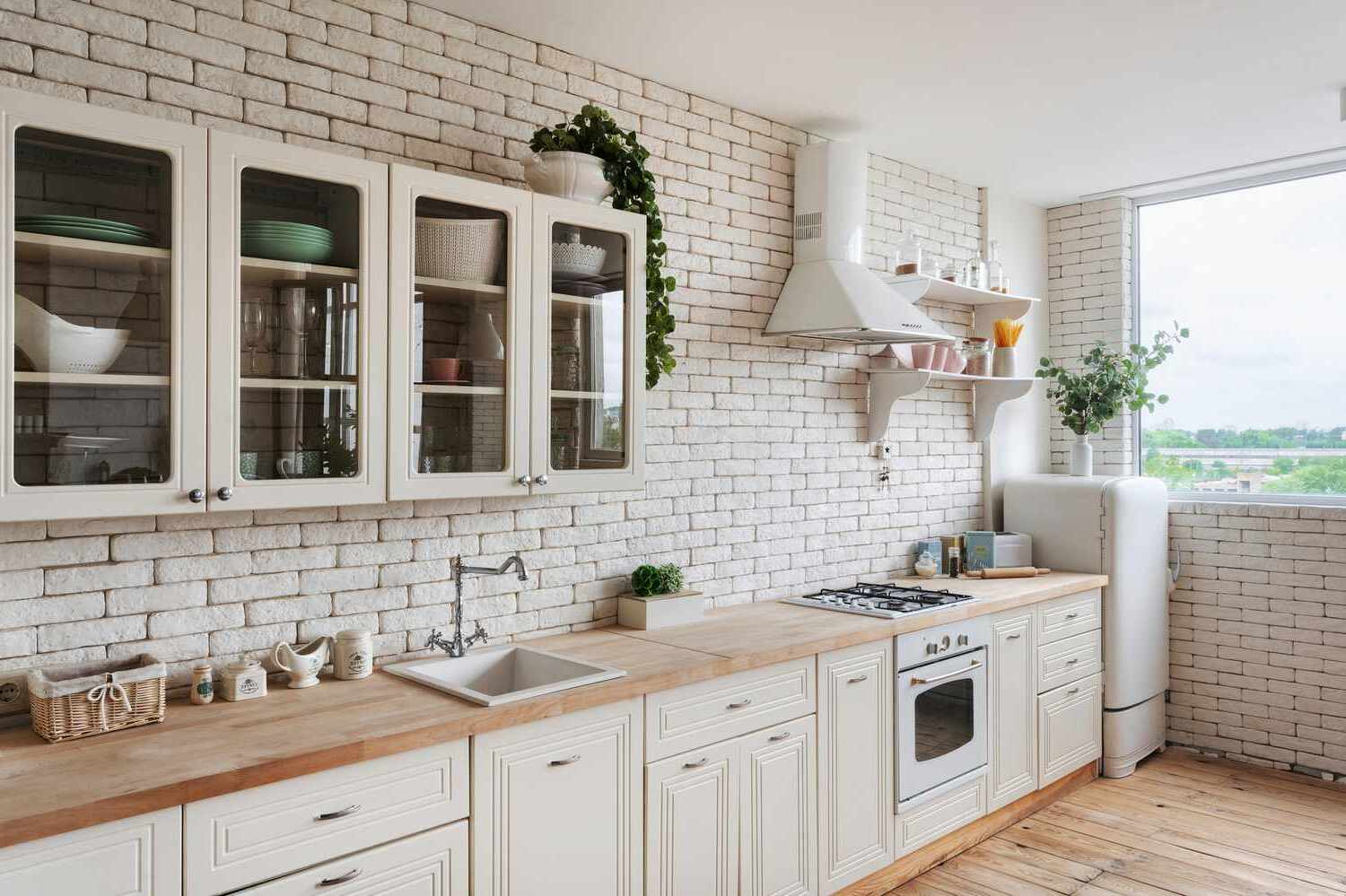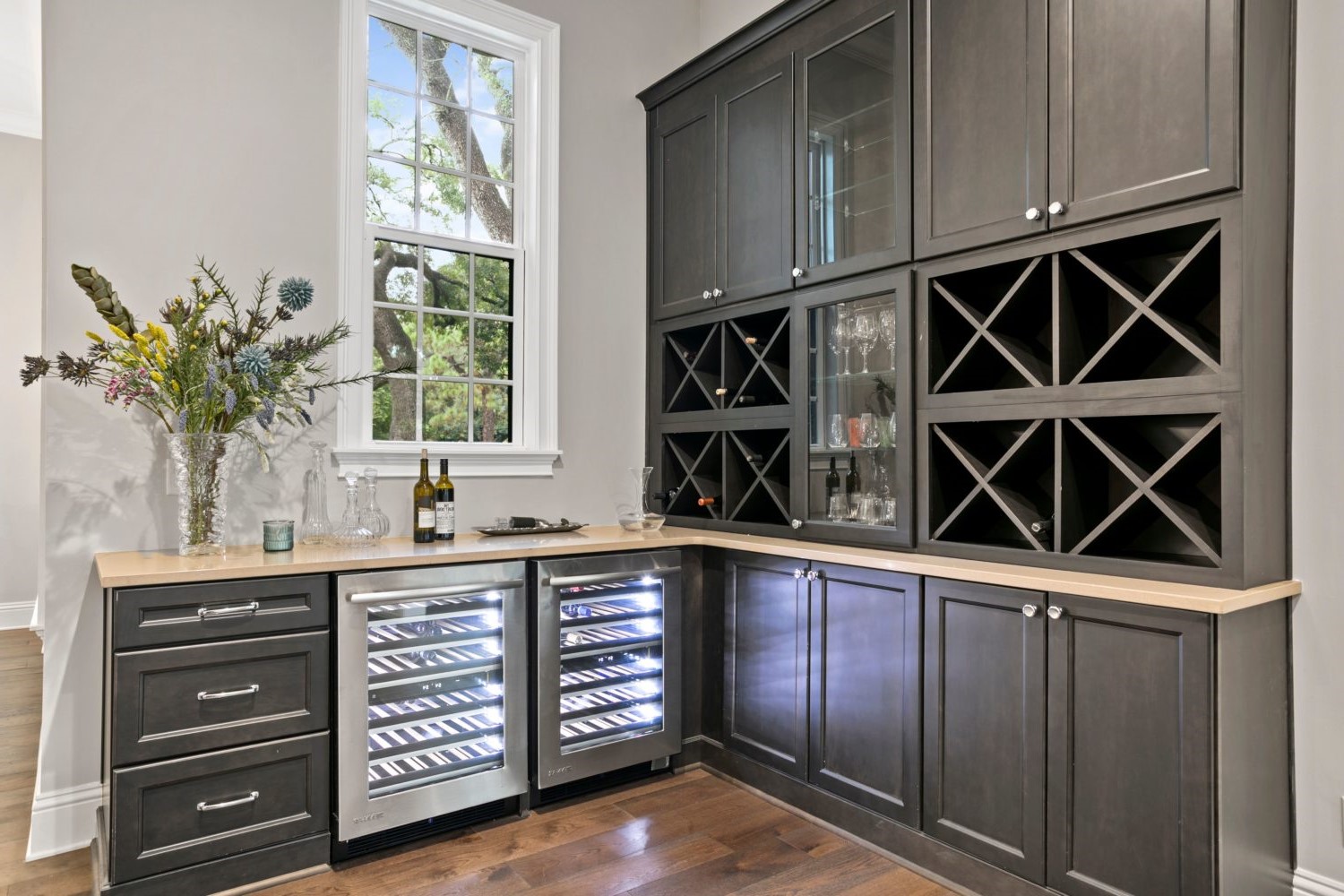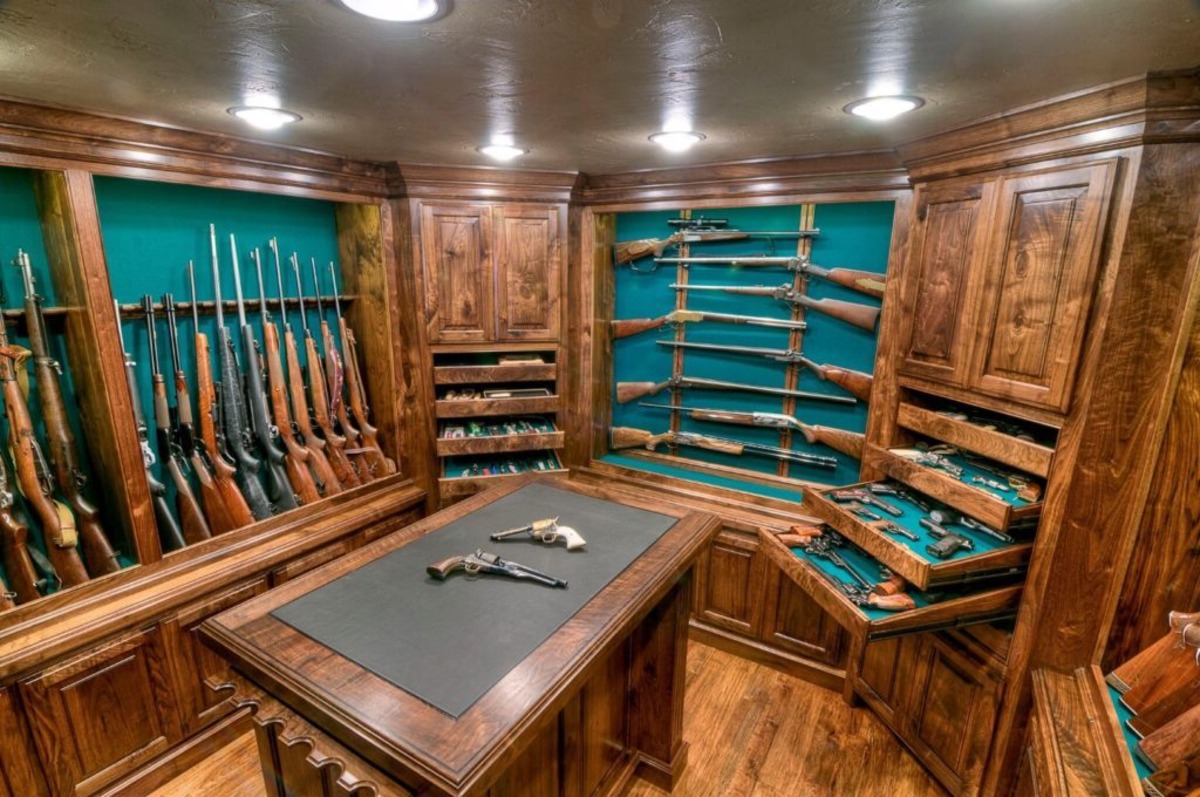Home>Create & Decorate>DIY & Crafts>How To Build A Corner Cabinet
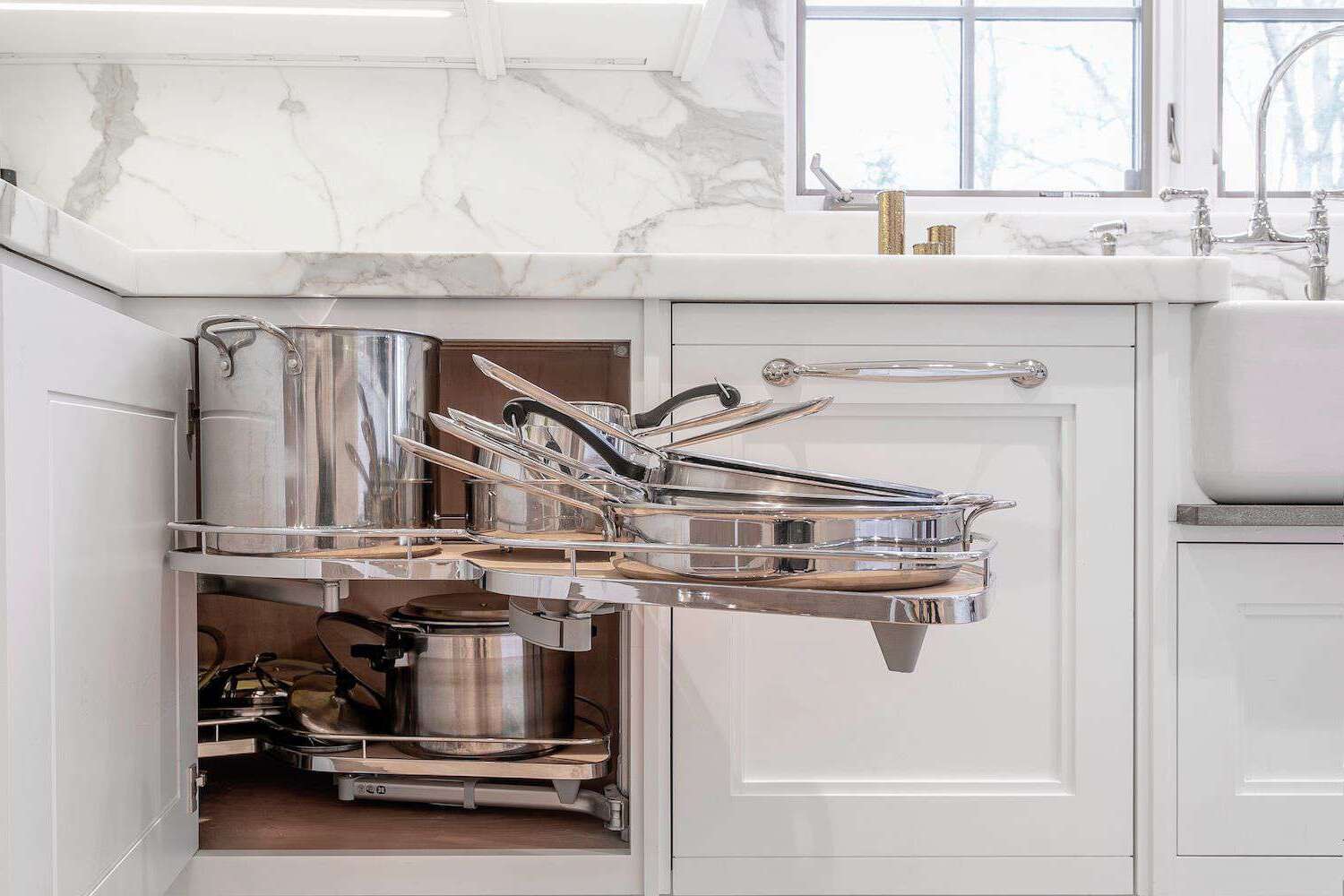

DIY & Crafts
How To Build A Corner Cabinet
Published: February 28, 2024

Content Creator specializing in woodworking and interior transformations. Caegan's guides motivate readers to undertake their own projects, while his custom furniture adds a personal touch.
Learn how to build a corner cabinet with our DIY & Crafts guide. Get step-by-step instructions and expert tips for your next woodworking project.
(Many of the links in this article redirect to a specific reviewed product. Your purchase of these products through affiliate links helps to generate commission for Twigandthistle.com, at no extra cost. Learn more)
Introduction
Building a corner cabinet can be a rewarding and practical DIY project that adds both functionality and aesthetic appeal to your living space. Whether you're a seasoned woodworking enthusiast or a novice looking to embark on a new venture, constructing a corner cabinet allows you to showcase your craftsmanship while customizing a piece of furniture to fit a specific area in your home.
A corner cabinet is a versatile storage solution that maximizes the often underutilized space in the corners of a room. It can be designed to hold a variety of items, from dinnerware and glassware in the dining room to books and decorative accents in the living room. By creating a custom corner cabinet, you have the opportunity to tailor its size, style, and features to perfectly suit your needs and complement your existing decor.
In this comprehensive guide, we will walk through the step-by-step process of building a corner cabinet, from gathering the necessary materials and tools to assembling the frame, installing shelves, attaching the cabinet door, and finally, sanding and finishing the cabinet. Whether you prefer a sleek modern design or a rustic farmhouse-inspired look, this guide will provide you with the foundational knowledge and practical tips to bring your vision to life.
By following these instructions and infusing your own creativity, you can craft a one-of-a-kind corner cabinet that not only serves a functional purpose but also becomes a focal point in your home. So, roll up your sleeves, gather your tools, and let's embark on this woodworking journey together to create a stunning and practical corner cabinet that reflects your personal style and enhances the ambiance of your living space.
Read more: How to Build a DIY Blind Corner Cabinet
Step 1: Gather Materials and Tools
Before diving into the construction of a corner cabinet, it's essential to gather all the necessary materials and tools to ensure a smooth and efficient building process. Here's a comprehensive list of items you'll need to get started:
Materials:
- Wood: Select high-quality wood that aligns with your design preferences and fits the dimensions of your desired cabinet. Common options include oak, pine, maple, or birch plywood.
- Wood Screws and Nails: Choose screws and nails suitable for woodworking, ensuring they are of the appropriate length and gauge for secure assembly.
- Wood Glue: Opt for a strong wood adhesive to reinforce joints and enhance the overall sturdiness of the cabinet.
- Cabinet Hardware: Depending on your design, gather hinges, knobs, or handles for the cabinet door.
- Sandpaper: Acquire a variety of grits to smoothen the wood surfaces and prepare them for finishing.
- Wood Finish: Select a finish that complements the wood type and aligns with your desired aesthetic, such as stain, paint, or varnish.
Tools:
- Measuring Tape: A precise measuring tape is essential for accurately determining the dimensions of the cabinet components.
- Circular Saw or Table Saw: A reliable saw for cutting the wood to the required sizes and angles.
- Drill and Bits: A power drill with a selection of drill bits for creating pilot holes and securing screws.
- Clamps: Various sizes of clamps to hold wood pieces together during assembly.
- Level: Ensure the cabinet is perfectly aligned by using a level during construction.
- Screwdriver: Both manual and electric screwdrivers will be useful for driving screws into the wood.
- Safety Gear: Don't forget safety glasses, ear protection, and a dust mask to prioritize safety during the woodworking process.
By gathering these materials and tools, you'll set the stage for a successful and enjoyable cabinet-building experience. With everything in place, you'll be ready to move on to the next step: measuring and cutting the wood to begin constructing the frame of the corner cabinet.
Step 2: Measure and Cut Wood
Accurate measurements and precise cuts are crucial in the construction of a corner cabinet. Before diving into the cutting process, it's essential to have a detailed plan or blueprint outlining the dimensions of each cabinet component. This plan serves as a roadmap, guiding you through the cutting process and ensuring that the pieces fit together seamlessly during assembly.
Begin by measuring the space where the corner cabinet will be placed. Take precise measurements of the height, width, and depth, accounting for any architectural features or obstructions in the corner. With these measurements in hand, you can determine the exact dimensions for the cabinet frame, shelves, and door.
Next, transfer these measurements to the selected wood, marking the cut lines with a pencil or a marking tool. When cutting the wood, it's crucial to use a reliable saw, such as a circular saw or table saw, equipped with a sharp blade suitable for woodworking. Ensure that the saw is set to the correct angles and bevels required for the specific design of your corner cabinet.
As you begin cutting the wood according to the marked dimensions, prioritize precision and caution to achieve clean and accurate cuts. Remember the age-old adage: "Measure twice, cut once." This simple yet invaluable advice underscores the importance of double-checking measurements before making any cuts, minimizing the risk of errors that could compromise the integrity of the cabinet components.
When cutting pieces that require identical dimensions, such as the sides of the cabinet frame or the shelves, consider using a stop block or a cutting jig to ensure uniformity across all components. This attention to detail will contribute to a cohesive and professional-looking final product.
Throughout the cutting process, prioritize safety by using appropriate safety gear, including eye protection and ear defenders. Additionally, always follow the manufacturer's guidelines for operating power tools and handling sharp cutting implements.
By meticulously measuring and cutting the wood according to the predetermined dimensions, you'll lay the foundation for a well-crafted corner cabinet. With the individual components accurately sized and shaped, you'll be ready to progress to the next step: assembling the cabinet frame.
Remember, the precision and care invested in this phase will directly impact the quality and visual appeal of the finished corner cabinet.
Read more: DIY Corner Cabinet: Step-by-step Guide
Step 3: Assemble Cabinet Frame
With the individual components of the corner cabinet cut to precise dimensions, it's time to embark on the assembly process, starting with the construction of the cabinet frame. This foundational step forms the structural core of the cabinet, providing the framework upon which the shelves and door will be installed.
Begin by laying out the cut pieces of wood for the cabinet frame in the designated workspace, ensuring that all components are easily accessible. Before joining the pieces together, it's advisable to dry-fit the frame, aligning the edges and corners to verify that the pieces interlock seamlessly. This dry-fitting process allows you to make any necessary adjustments before applying wood glue and fasteners.
Once satisfied with the dry-fit, apply a thin, even layer of high-quality wood glue to the joining surfaces of the wood components. Position the pieces according to the predetermined design, using clamps to secure the joints tightly. The clamps will hold the components in place as the wood glue sets, creating strong and durable bonds between the interconnected pieces.
With the frame securely clamped, it's time to reinforce the joints by driving wood screws or nails into the pre-drilled pilot holes. This additional fastening ensures the long-term stability and structural integrity of the cabinet frame. When driving screws or nails, exercise caution to prevent splitting the wood, and use a countersink bit to create a clean, flush finish.
As the wood glue dries and the fasteners are secured, periodically check for any signs of misalignment or warping, making minor adjustments as needed to maintain the squareness and alignment of the cabinet frame. A carpenter's square can be invaluable for verifying that the corners are perfectly perpendicular, contributing to a professional and polished end result.
Throughout the assembly process, prioritize patience and attention to detail, as these qualities are essential for achieving a precisely constructed cabinet frame. By meticulously following the design plan and adhering to best practices for woodworking joinery, you'll lay the groundwork for a sturdy and visually appealing corner cabinet.
With the cabinet frame assembled, the project will transition to the next phase: installing the shelves within the cabinet. This pivotal step will further enhance the functionality and storage capacity of the corner cabinet, bringing it one step closer to completion.
As you progress through the assembly process, remember that each meticulous step contributes to the overall quality and craftsmanship of the finished corner cabinet. With the frame securely assembled, you're well on your way to creating a custom piece of furniture that seamlessly integrates into your living space.
Step 4: Install Shelves
With the cabinet frame securely assembled, the next crucial step in building a corner cabinet is the installation of shelves. The addition of shelves not only enhances the cabinet's storage capacity but also contributes to its organizational functionality. Whether you intend to display decorative items or store everyday essentials, the proper installation of shelves is essential for maximizing the utility of the cabinet.
Begin by carefully measuring and marking the desired positions for the shelves within the cabinet frame. Take into account the specific items or objects that the shelves will accommodate, ensuring that the spacing between each shelf is tailored to accommodate varying heights and sizes. Precision in measurement is key to creating a well-organized and versatile storage space within the cabinet.
Once the shelf positions are marked, it's time to install shelf supports or brackets. Depending on the design and construction of the cabinet, you may opt for adjustable shelf supports that allow for flexibility in shelf placement. Alternatively, fixed shelf brackets can be utilized for a more permanent and stable shelving solution.
After securing the shelf supports or brackets in their designated positions, carefully place the shelves onto the supports, ensuring a snug and level fit. It's advisable to double-check the alignment and levelness of each shelf before finalizing their placement, as this attention to detail contributes to a visually appealing and functional end result.
To further enhance the stability of the shelves, consider reinforcing their attachment to the cabinet frame with wood screws or nails. This additional fastening ensures that the shelves remain securely in place, capable of supporting the intended load without risk of displacement.
As the shelves are installed and secured within the cabinet, take a moment to assess the overall functionality and aesthetic appeal of the interior space. Consider the arrangement of the shelves in relation to the items they will hold, optimizing the layout to accommodate your specific storage needs.
With the shelves successfully installed, the corner cabinet begins to take shape as a fully functional and purposeful piece of furniture. The addition of shelves not only expands the cabinet's utility but also provides an opportunity to showcase decorative items or organize everyday essentials in a visually pleasing manner.
As the project progresses, the installation of shelves marks a significant milestone in the construction of the corner cabinet, bringing it one step closer to completion. With the shelves in place, the focus shifts to the final stages of the woodworking process, including the attachment of the cabinet door and the meticulous sanding and finishing of the cabinet surfaces.
Step 5: Attach Cabinet Door
The attachment of the cabinet door is a pivotal step in the construction of a corner cabinet, as it not only adds a functional element but also contributes to the overall aesthetic appeal of the piece. Whether you opt for a traditional hinged door, a sleek sliding door, or a decorative glass-paneled door, the process of attaching the cabinet door requires precision and attention to detail to ensure a seamless and visually pleasing outcome.
Begin by carefully selecting the appropriate hinges or hardware for the cabinet door, considering factors such as the door's weight, size, and design. It's essential to choose hinges that are durable, reliable, and suitable for the specific style of the cabinet door. Additionally, ensure that the selected hinges are compatible with the material and thickness of the cabinet frame to facilitate a smooth and secure attachment.
Once the hinges are chosen, position the cabinet door in its designated opening within the cabinet frame, ensuring that it aligns perfectly and operates smoothly. With the door in place, mark the locations for the hinge attachment on both the door and the cabinet frame, using a pencil or a marking tool to indicate the precise placement of the hinges.
Next, carefully install the hinges onto the cabinet door, following the manufacturer's guidelines for proper alignment and attachment. It's crucial to secure the hinges firmly to the door, ensuring that they are positioned evenly and parallel to the edges to facilitate smooth opening and closing movements.
With the hinges attached to the door, proceed to affix the corresponding hinge plates or mounting hardware to the cabinet frame. Ensure that the hinge plates are positioned accurately and securely fastened to the frame, aligning with the markings made earlier to guarantee a seamless connection between the door and the cabinet.
Once the hinges and hinge plates are in place, carefully align the cabinet door with the hinge plates, ensuring a precise fit and smooth operation. Secure the hinges to the hinge plates, verifying that the door swings open and closes without obstruction. It's advisable to test the functionality of the door multiple times to confirm that it operates smoothly and aligns perfectly within the cabinet frame.
As the cabinet door is successfully attached, take a moment to appreciate the transformation it brings to the corner cabinet. The addition of the door not only enhances the functionality of the cabinet but also contributes to its visual appeal, providing a polished and cohesive finish to the woodworking project.
With the cabinet door securely attached, the focus shifts to the final phase of the construction process: sanding and finishing the cabinet surfaces. This critical step will elevate the overall appearance of the corner cabinet, preparing it for long-term use and enjoyment in your living space.
Step 6: Sand and Finish Cabinet
The process of sanding and finishing the cabinet is a transformative phase that elevates the overall appearance and durability of the corner cabinet. This crucial step involves refining the wood surfaces, smoothing out imperfections, and applying a protective finish to enhance the natural beauty of the wood while safeguarding it from wear and tear.
Read more: How To Build A Corner Closet
Sanding the Wood Surfaces
Begin by thoroughly inspecting the cabinet frame, shelves, and door to identify any rough spots, uneven edges, or blemishes that require attention. Utilize a variety of sandpaper grits, starting with coarser grits to address any prominent imperfections and gradually progressing to finer grits for a smooth and polished finish. Employ a sanding block or an orbital sander to maintain consistent pressure and achieve uniformity across the wood surfaces. Pay special attention to the edges and corners, ensuring that they are carefully smoothed to prevent splinters and create a refined look.
Preparing for Finishing
After the wood surfaces have been meticulously sanded to a smooth and even texture, it's essential to remove any residual dust and debris. Use a tack cloth or a soft, lint-free cloth to gently wipe down the entire cabinet, eliminating any particles that could compromise the quality of the finish. This preparatory step sets the stage for the application of the chosen wood finish, ensuring optimal adhesion and a flawless final result.
Applying the Wood Finish
Select a wood finish that aligns with your aesthetic preferences and complements the chosen wood species. Whether opting for a rich stain to accentuate the natural grain of the wood, a vibrant paint to infuse color and character, or a protective varnish to enhance durability, the application process requires precision and care. Utilize a high-quality brush, foam applicator, or sprayer to apply the finish evenly across the wood surfaces, following the manufacturer's recommendations for drying times and additional coats. Each layer of finish contributes to the depth and luster of the wood, culminating in a visually striking and resilient surface.
Final Touches
As the wood finish dries, periodically inspect the cabinet surfaces to ensure a flawless and consistent appearance. Address any potential drips, runs, or uneven areas by lightly sanding and applying additional coats as needed. Once the finish has fully cured, admire the stunning transformation of the corner cabinet, reveling in the seamless integration of craftsmanship and artistry. The completed cabinet stands as a testament to your dedication and skill, ready to enhance your living space with its functional utility and captivating beauty.
By meticulously sanding and finishing the cabinet, you have bestowed it with a timeless allure and fortified its resilience, ensuring that it will serve as a cherished and enduring addition to your home for years to come.
Read more: How to Build Sliding Cabinet Doors
Conclusion
In conclusion, the journey of building a corner cabinet is a testament to the fusion of craftsmanship, creativity, and practicality. From the initial gathering of materials and tools to the meticulous assembly of the cabinet frame, installation of shelves, attachment of the cabinet door, and the transformative process of sanding and finishing, each step represents a deliberate and artful progression toward the creation of a functional and visually captivating piece of furniture.
As the final brushstrokes of the wood finish are applied, the corner cabinet emerges as a personalized expression of woodworking prowess, tailored to fit seamlessly into its designated space. The culmination of this endeavor is not merely a utilitarian storage unit but a testament to the dedication and artistry invested in its construction.
The completed corner cabinet stands as a versatile and elegant addition to any living space, offering both practical storage solutions and a visually appealing focal point. Whether adorning a dining room, living room, or study, the custom-built cabinet serves as a testament to the art of woodworking and the fulfillment of a creative vision.
As the finishing touches are lovingly applied, the corner cabinet becomes more than a piece of furniture; it embodies the dedication, precision, and passion of its creator. Its presence enriches the ambiance of the home, providing a functional and aesthetically pleasing storage solution that reflects the unique style and craftsmanship of its maker.
In the end, the journey of building a corner cabinet transcends the mere act of construction; it is a narrative of creativity, skill, and the transformation of raw materials into a functional work of art. The completed cabinet stands as a tangible symbol of the dedication and ingenuity poured into its creation, ready to serve and inspire for years to come.

